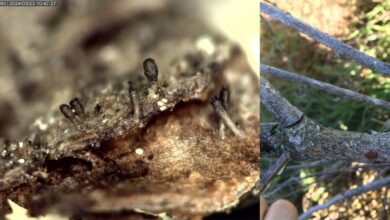 Helen Zhang
Helen ZhangPlate tectonics are in a constant motion as they reshape the Earth’s crust, creating most of what we see on the surface of the Earth. This geological process happens to bring volatile elements — substances that easily evaporate at normal temperatures — back into the Earth’s mantle.
Because the Earth’s mantle has never been reached, scientists and researchers have turned to a different source of information on plate tectonics: ‘superdeep’ diamonds, found beneath the Earth’s surface at depths of 300 to 700 kilometers.
Graham Pearson, a U of A professor in the department of earth and atmospheric sciences, studied a ‘superdeep’ diamond found in Guinea, West Africa. According to Pearson, the minerals found in this diamond “shed a new light on plate tectonics.”
“We use diamonds as probes of the deep earth to tell us pieces of information about the deepest parts of the Earth; you can’t get that any other way,” Pearson said.
Superdeep diamonds provide information on the cycling of volatile elements — which evaporate easily in natural temperatures — such as water and carbon. Because water and carbon are both important elements, researchers have started using diamonds to understand the history of their cycles.
“All the water on the Earth, and all the carbon in the continents, plants, and life, ultimately comes from the deep interior of the Earth — Earth’s mantle,” Pearson said.
According to Pearson, diamonds prove that volatile elements cycle from the Earth’s mantle to the crust, and then back down to the deepest parts of the mantle.
The motion of materials in the mantle — such as the cycling of deep oceanic slabs — powers the movement of tectonic plates. Because superdeep diamonds are found in the deep earth, their crystallization process provides information on the process of plate tectonics.
“They crystallize during the cycling of the deep oceanic slabs into the earth’s mantle. That process makes diamonds, and then traps and forms a little time capsule of the deep subduction [the sliding of one plate below another] of oceanic plates at those depths,” Pearson said.
In the superdeep diamond obtained by the U of A’s diamond research group, a pure mineral olivine was found. The mineral was featured in a Nature study co-authored by Pearson.
Olivine found on the Earth’s surface often has traces of iron in it — according to Pearson, the olivine found in this superdeep diamond is “one of the purest examples of magnesium.”
The olivine found in the diamond provides more information on how plate tectonics formed the diamond, and provides more insight into the geological process as a whole.
Because olivine is less stable as a mineral, it can easily alter. Altered olivine — more commonly known as iddingsite — is a mixture of olivine, clay minerals, iron oxides, and ferrihydrites.
“We think this particular olivine started off as an altered olivine, which [collided] with a plate to some depth, then transformed to a much higher pressure mineral, which then reverted back to olivine,” Pearson said.
“When that slab gets heated up, it becomes plastic and it buckles as it descends to great depths. The complex geometry that is formed by that buckling process creates a very complex series of mineral reactions and gradients.”
The mineral reactions and gradients that are formed by the buckling process create a variety of minerals, which were found in the superdeep diamond.
The diamond research group at the U of A has also studied superdeep diamonds that were found in Alberta, as the province is home to “similar rocks that transport these diamonds to the Earth’s surface.”
“Diamonds contain the deepest bits of the Earth that you’ll ever hold in your hand,” Pearson said. “We’re really only just scratching the surface of the information [diamonds] have to offer about the inner-workings of the Earth.”




